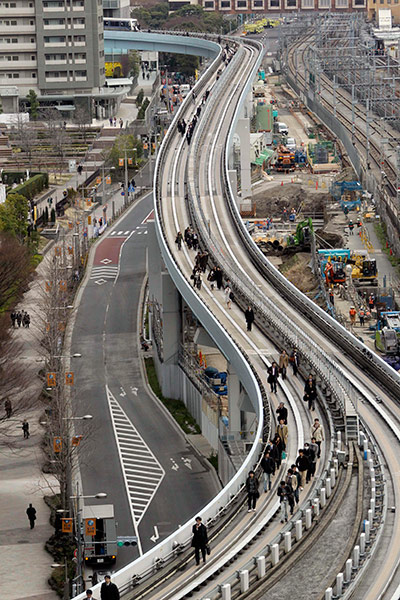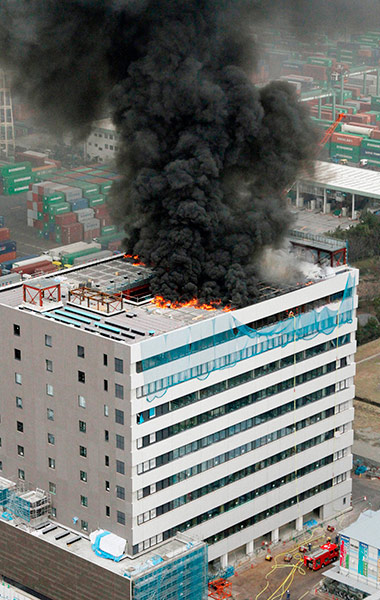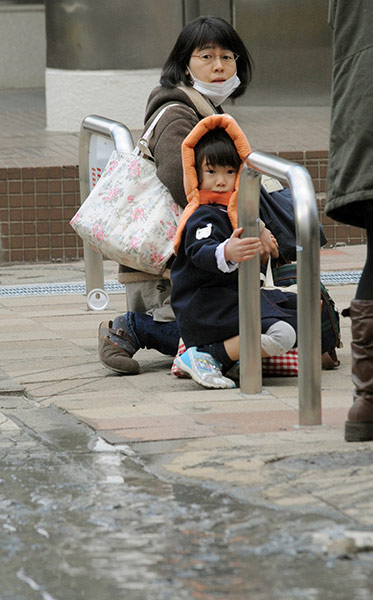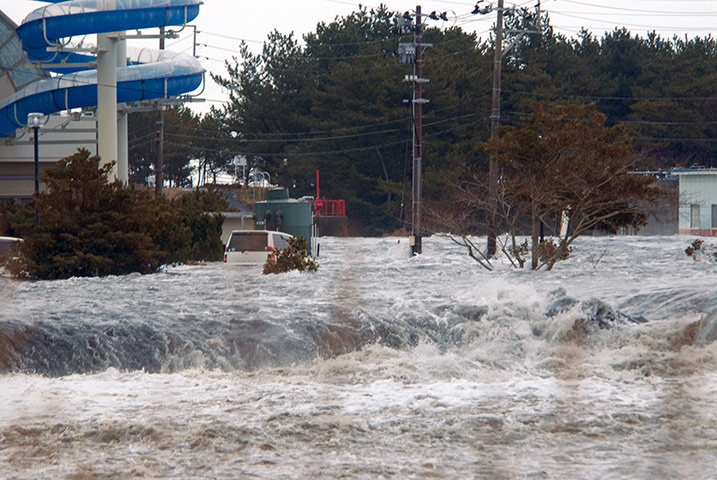A massive 8.8 magnitude earthquake has hit the northeast coast of Japan and triggered a tsunami warning across the Pacific Ocean.
There have been several strong aftershocks and a ten-metre tsunami following the quake, which also caused buildings to shake violently in the capital Tokyo.
Japanese media have reported at least 32 deaths and many injuries, with fires breaking out from Sendai city in northern Japan to Tokyo.
Two people have reportedly been killed by a collapsing ceiling at a Honda factory in Tochigi.
There are major fires at an oil refinery and steel plant in Chiba, east of Tokyo. Dozens of storage tanks are under threat at the refinery.
Several people have been injured after a roof collapsed at a hall in Tokyo where a graduation ceremony for 600 students was being held.
The runways at Sendai Airport have been submerged by the tsunami, with dozens of people seen on the roof of the terminal building.
It has been reported that a hotel has collapsed in the city and people are feared buried in the rubble.
Television pictures showed a vast wall of water carrying buildings and cars across a large area of coastal farmland.
Bullet trains to the north of the country have been halted and nuclear power plants have been shut down.
All of the country's ports have been closed and operations suspended.
At least 4m homes are without power in Fukushima prefecture north of Tokyo.
The UN has said that 30 international search and rescue teams are on alert and ready to help.
A tsunami warning was extended to the whole of the Pacific basin, except for mainland US and Canada, following the earthquake off Japan.
The warning includes Hawaii and extends from Mexico and Central down to South American countries on the Pacific.
The International Federation of Red Cross and Red Crescent Societies said the tsunami is currently higher than some Pacific islands which it could wash over.
Paul Conneally, IFRC spokesman, said the biggest concern was for developing countries in the Asian and Pacific region.
No nuclear radiation leaked - prime minister
Prime Minister Naoto Kan quickly assembled his cabinet after the quake hit.
Mr Kan said that no nuclear plant radiation has leaked after the earthquake.
The government has dispatched naval vessels from near Tokyo to the worst-hit northeastern area of Miyagi.
The US Geological Survey said the massive quake struck off-shore 130km east of Sendai in Honshu at a depth of 24km.
'The building shook for what seemed a long time and many people in the newsroom grabbed their helmets and some got under their desks,' Reuters correspondent Linda Sieg said in Tokyo.
'It was probably the worst I have felt since I came to Japan more than 20 years ago.'

The earthquake was felt as far away as the Chinese capital of Beijing, 2,500km to the west.
Russia's emergency ministry has issued a tsunami warning for the Kuril Island chain.
Taiwan's central weather bureau has also warned people living on the island's east and northeast coasts to be on guard for tsunamis.
Indonesia has warned people living on its eastern parts including Papua, Maluku and North Sulawesi about a possible tsunami.
Tokyo sits on the intersection of three continental plates - the Eurasian, Pacific and Philippine Sea plates - which are slowly grinding against each other, building up enormous seismic pressure.
The Department of Foreign Affairs has said that concerned relatives should contact it on 4082000.
They can also register details of Irish people in Japan on the DFA website.






Its possible that is will be downgraded slightly. Right now it is
number 7 on the all time list, just beating out last year's
Chilean quake at 8.8. It is approximately 80 times as powerful
as the one that destroyed Haiti.
It is interesting that 3 of the top ten are in the last decade with
2 in the last 13 months.